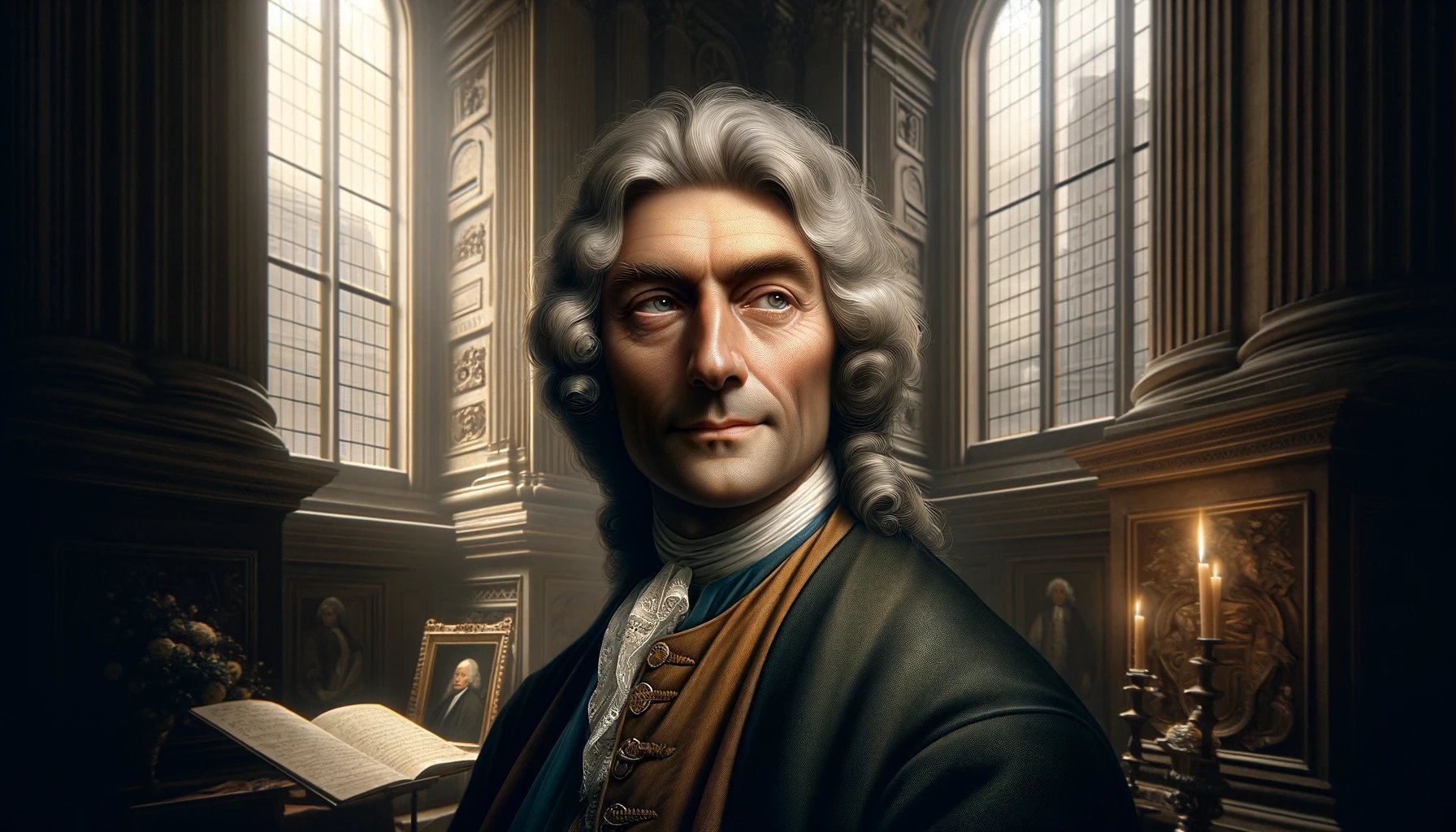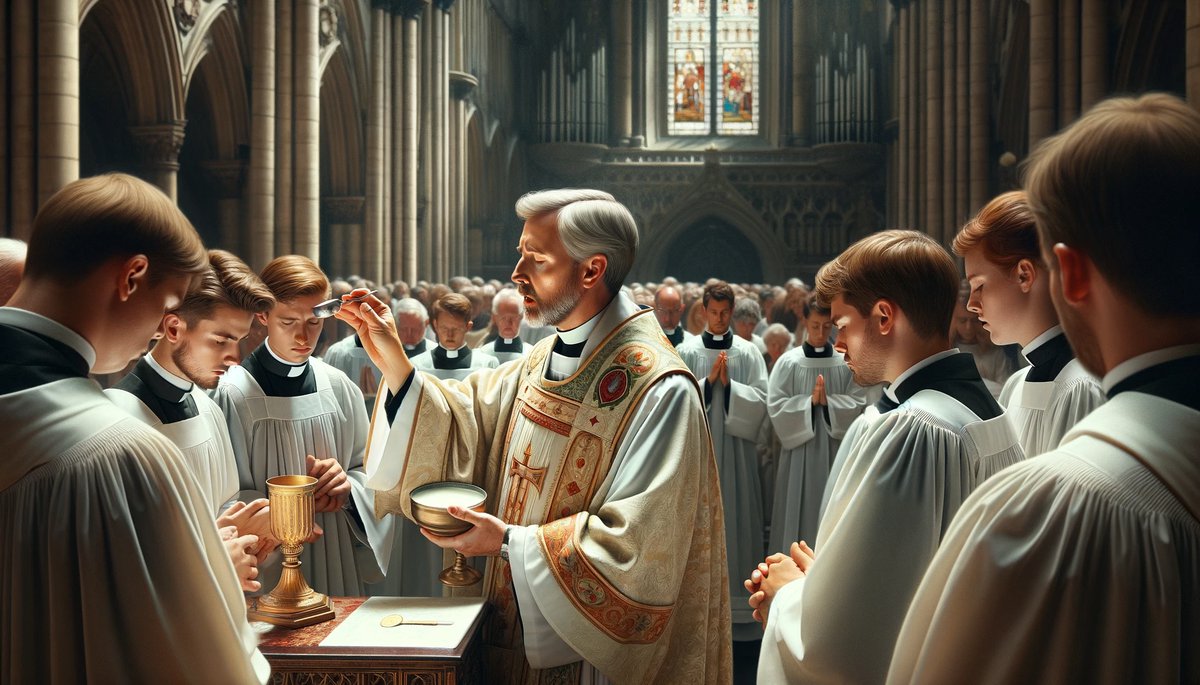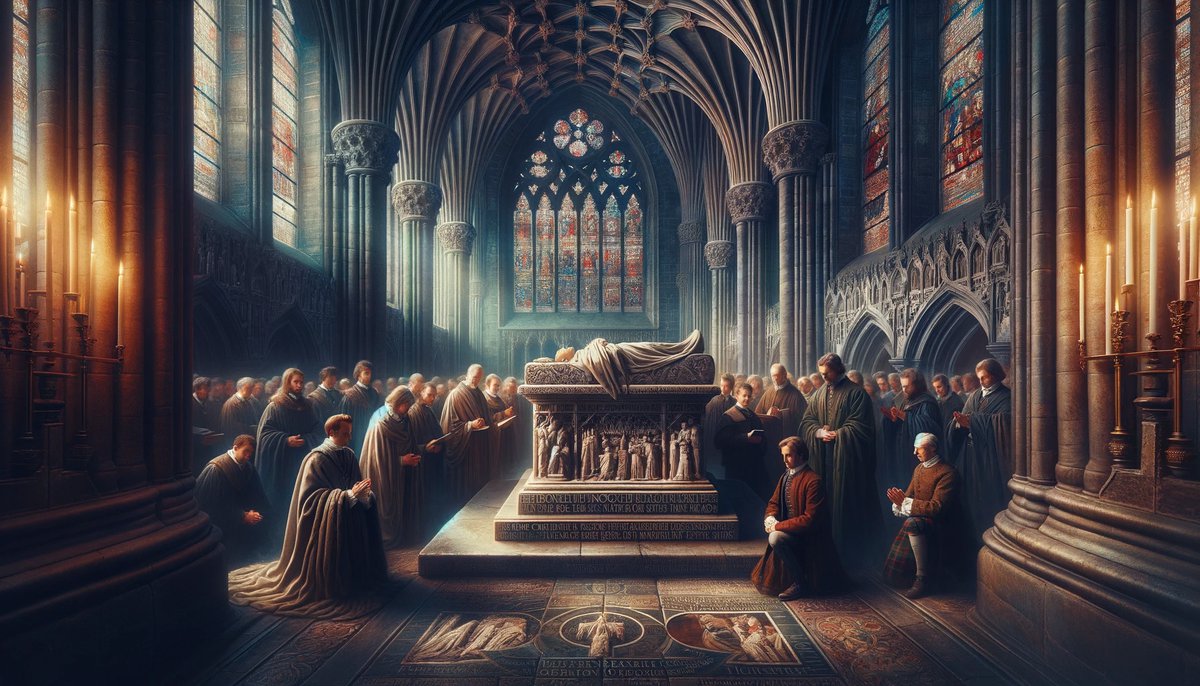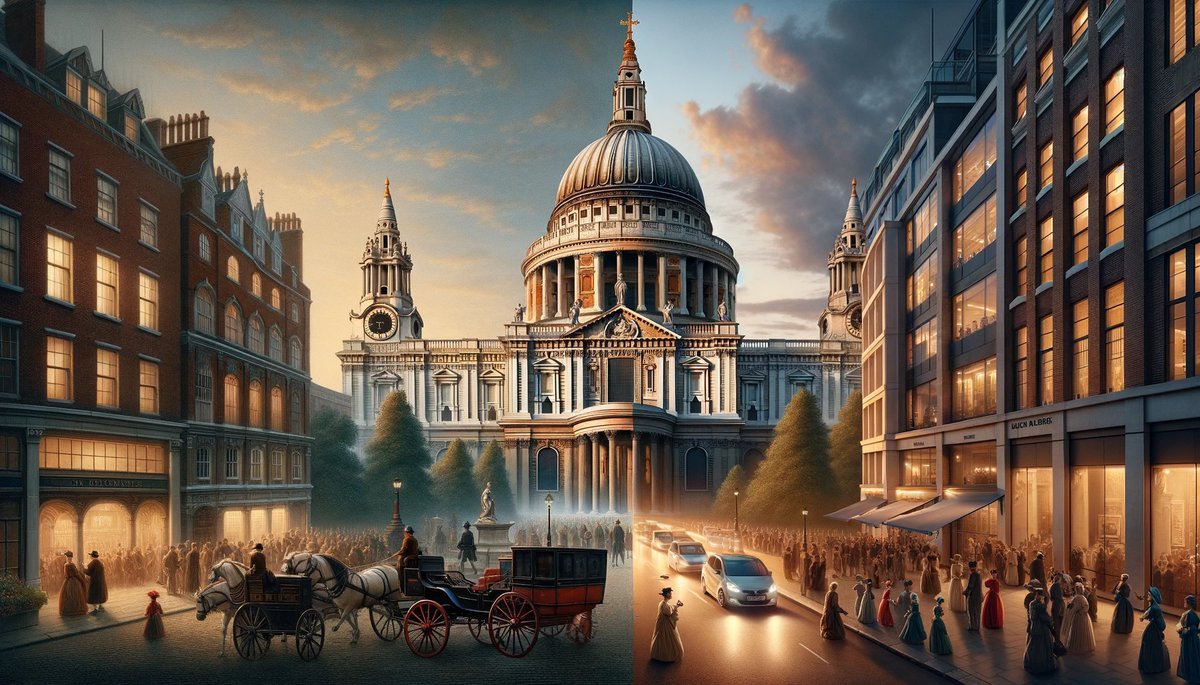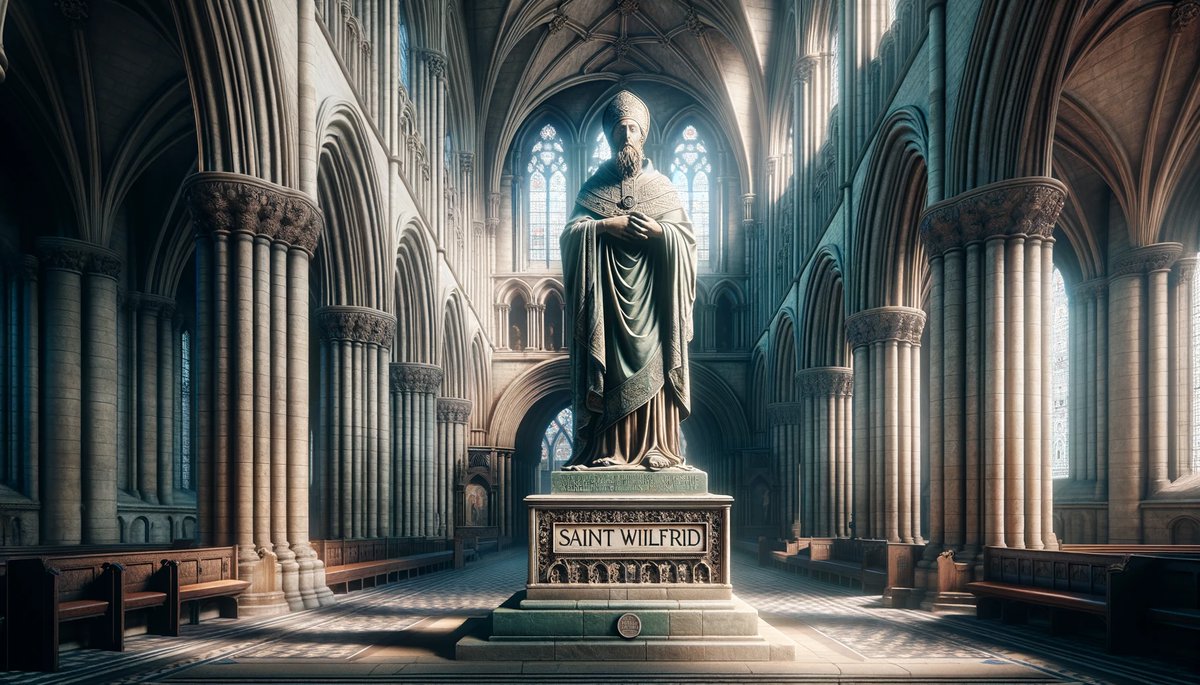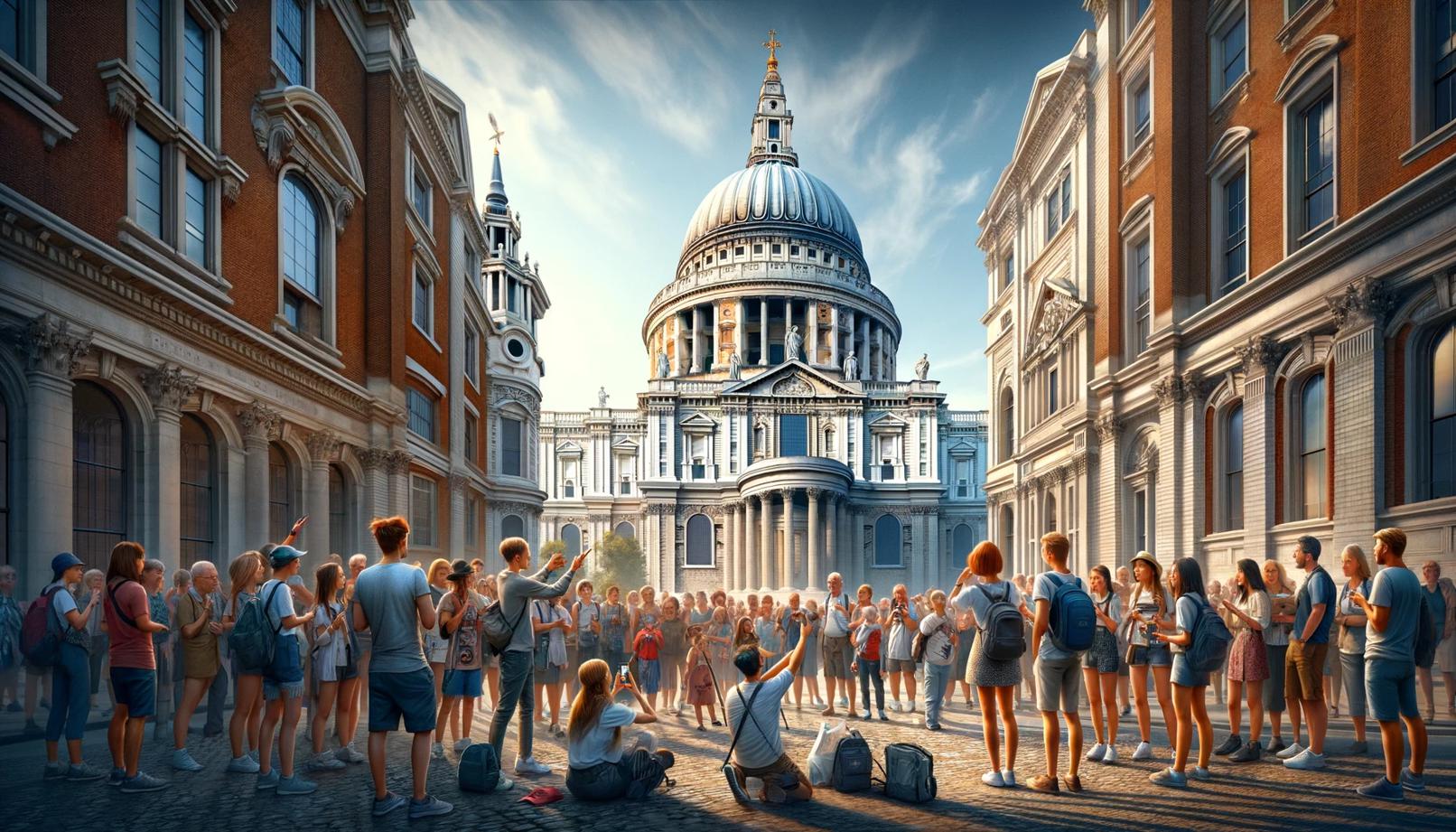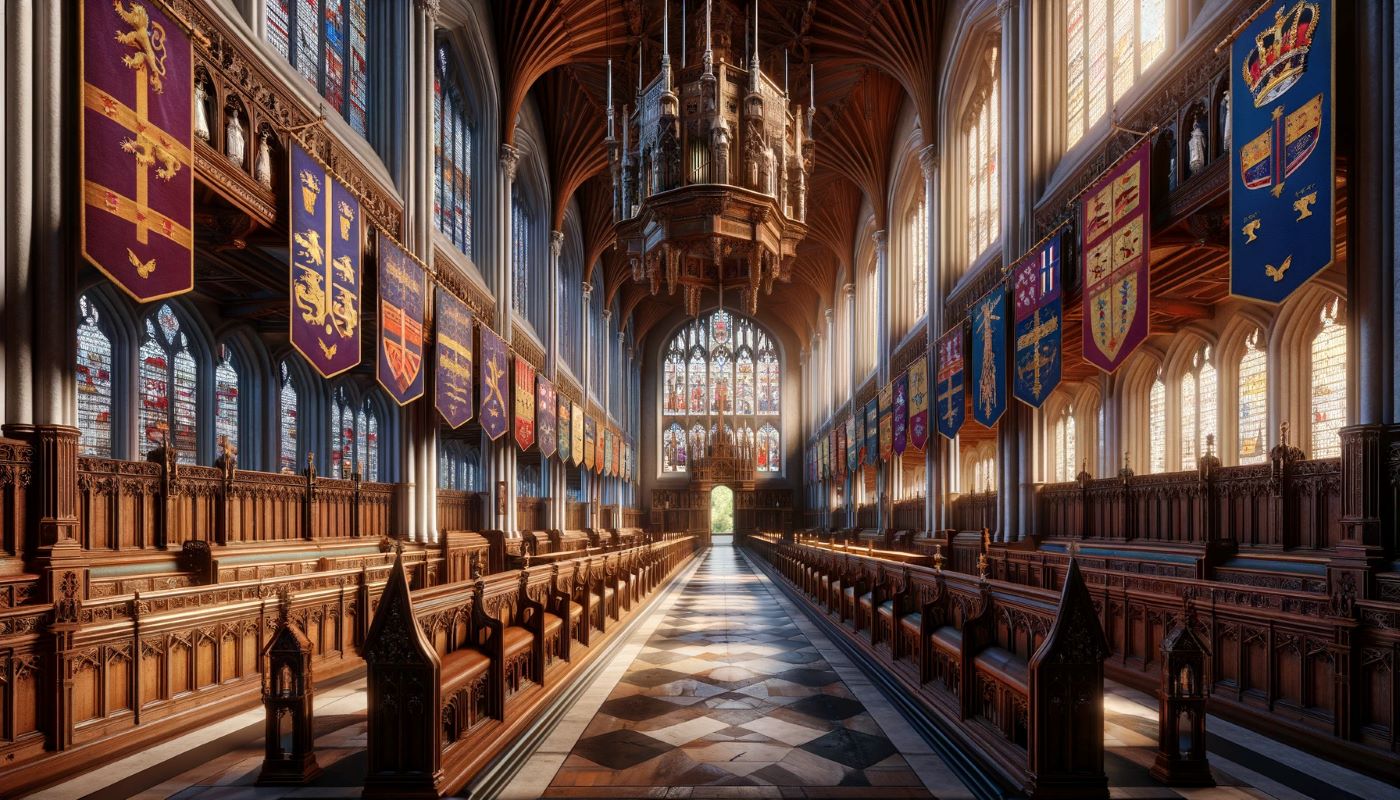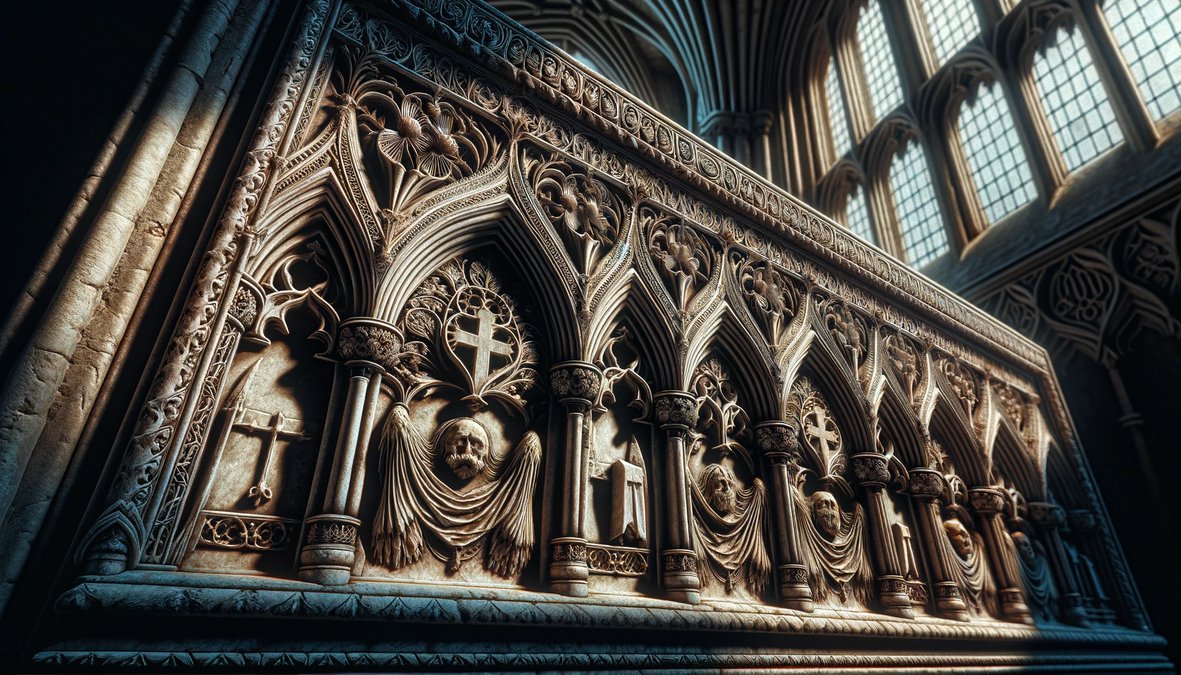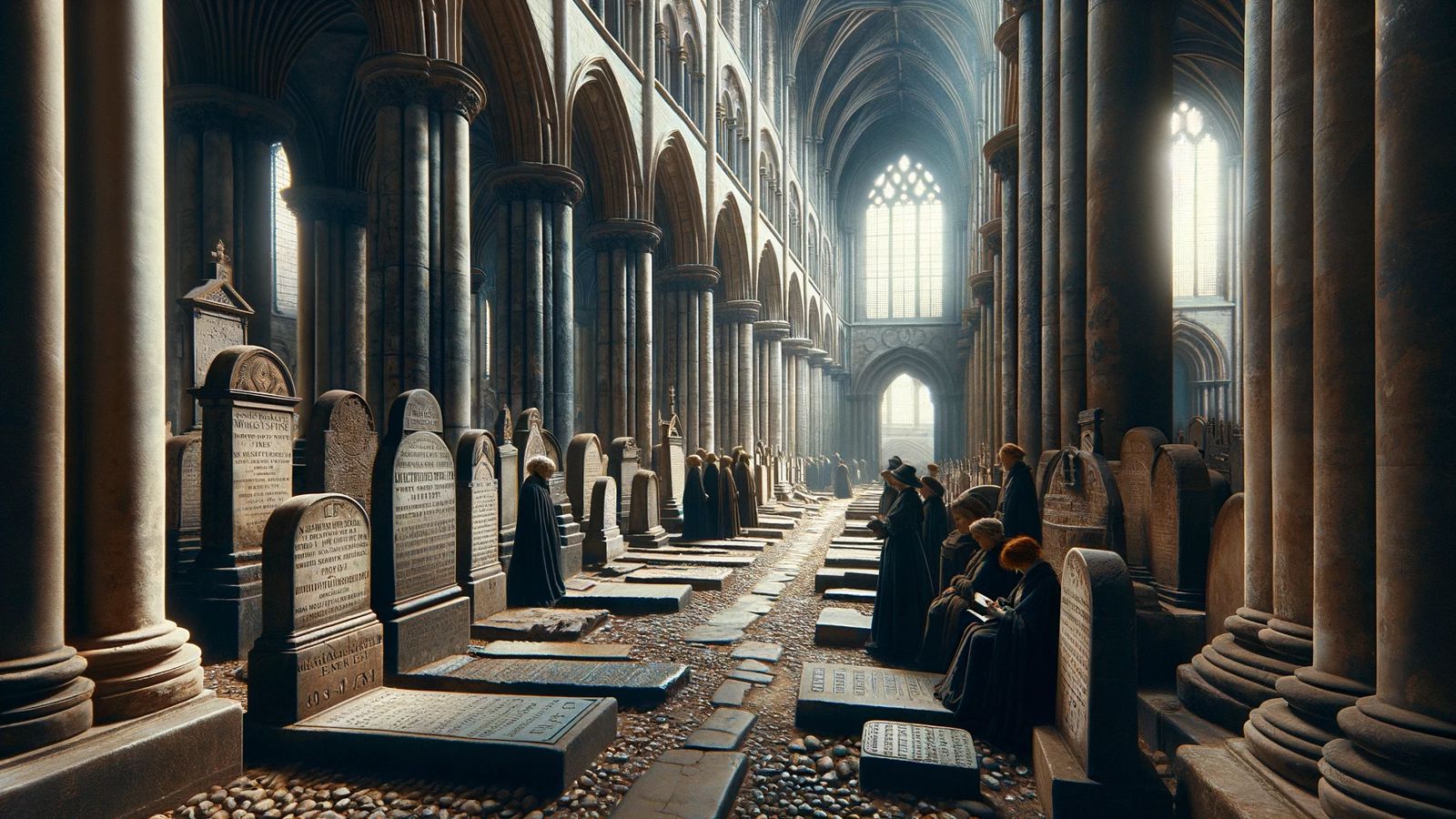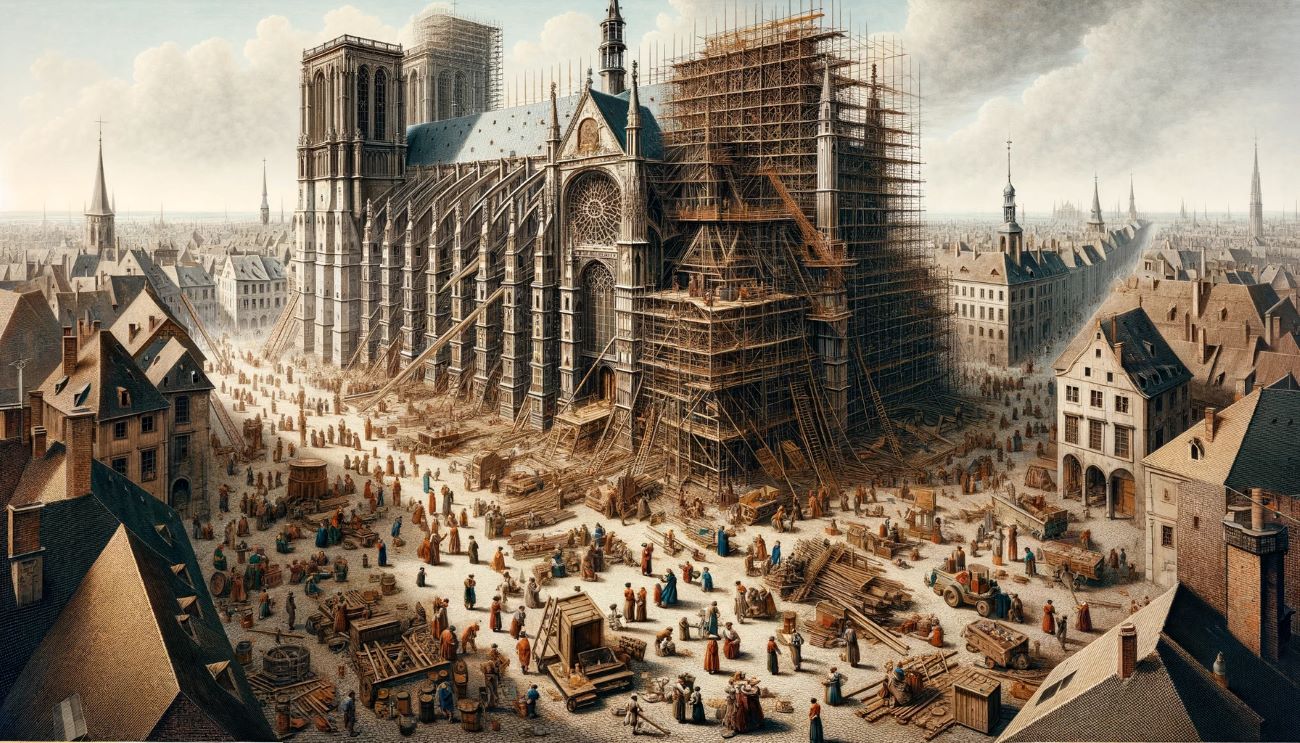Home>Arts and Culture>Who Is Buried At St. Paul’s Cathedral, London


Arts and Culture
Who Is Buried At St. Paul’s Cathedral, London
Published: February 19, 2024
Peter Smith, Editorial Director at Christian.net, combines deep insights into faith, politics, and culture to lead content creation that resonates widely. Awarded for his contributions to religious discourse, he previously headed a major organization for religious communicators, enhancing dialogue on faith's societal impacts.
Discover the fascinating history of St. Paul's Cathedral in London, including the renowned figures buried there. Uncover the rich arts and culture heritage of this iconic landmark.
(Many of the links in this article redirect to a specific reviewed product. Your purchase of these products through affiliate links helps to generate commission for Christian.net, at no extra cost. Learn more)
Table of Contents
Introduction
St. Paul's Cathedral, an iconic symbol of London's skyline, stands as a testament to the city's rich history and cultural heritage. This magnificent architectural marvel has been a focal point of religious, political, and social significance for centuries, drawing visitors from around the world to marvel at its grandeur and historical importance.
As one of the most recognizable landmarks in London, St. Paul's Cathedral has played a pivotal role in shaping the city's identity. Its striking dome, designed by Sir Christopher Wren, has stood tall for over 300 years, serving as a symbol of resilience and endurance through the trials and triumphs of time.
Beyond its architectural splendor, St. Paul's Cathedral holds a wealth of historical and cultural significance. From royal weddings and state funerals to moments of national celebration and mourning, the cathedral has been a silent witness to some of the most pivotal events in British history.
Moreover, St. Paul's Cathedral is not merely a place of worship; it is a living museum that encapsulates the stories of countless individuals who have left an indelible mark on the world. The cathedral's hallowed halls are adorned with memorials, monuments, and, most notably, the final resting places of esteemed figures from various walks of life.
In this article, we will delve into the captivating history of St. Paul's Cathedral, explore the famous individuals interred within its walls, examine the controversies surrounding its burials, and shed light on its enduring significance in the modern era. Join us on a journey through time as we unravel the mysteries and marvels of this iconic London landmark.
Read more: Where Is St. Paul’s Cathedral, London
History of St. Paul's Cathedral
St. Paul's Cathedral has stood as a symbol of London's resilience and endurance for centuries, bearing witness to the city's evolution through triumphs and tribulations. The cathedral's history traces back to the 7th century when it is believed that a Roman temple once stood on the site. However, it was not until the late 17th century that the current architectural masterpiece took shape.
The Great Fire of London in 1666 ravaged the city, leaving St. Paul's Cathedral in ruins. In the aftermath of this catastrophic event, Sir Christopher Wren, a renowned architect, was commissioned to design and oversee the construction of a new cathedral. Wren's vision for St. Paul's Cathedral was nothing short of revolutionary, and his ambitious design would come to define the London skyline for centuries to come.
The construction of the cathedral spanned over four decades, with the final touches completed in 1710. The result was a breathtaking masterpiece of Baroque architecture, crowned by the awe-inspiring dome that has since become an iconic feature of the London skyline. The cathedral's interior was adorned with intricate carvings, majestic pillars, and magnificent artwork, creating a space that exuded grandeur and spiritual reverence.
Throughout its history, St. Paul's Cathedral has been a site of national significance, hosting a myriad of events that have shaped the course of British history. From the funerals of distinguished figures to the jubilant celebrations of national victories, the cathedral has been a silent witness to the ebb and flow of the nation's collective narrative.
Moreover, St. Paul's Cathedral has served as a beacon of hope and resilience during times of adversity. It stood tall and proud during the tumultuous years of World War II, becoming a symbol of strength and endurance for Londoners in the face of relentless bombings. The image of the cathedral standing amidst the smoke and rubble remains etched in the collective memory of the city, a testament to its unwavering spirit.
Today, St. Paul's Cathedral continues to stand as a living testament to London's rich heritage, welcoming visitors from around the globe to marvel at its architectural splendor and immerse themselves in its storied past. As the heart of the city, it remains a symbol of endurance, resilience, and the enduring spirit of London.
Famous Burials at St. Paul's Cathedral
St. Paul's Cathedral stands as a hallowed resting place for some of the most eminent figures in British history, their final abodes becoming integral parts of the cathedral's rich tapestry. The solemn tranquility of the cathedral's crypts and chapels serves as a poignant reminder of the remarkable individuals interred within its sacred walls. Here, the legacies of statesmen, military leaders, scientists, and literary luminaries converge, creating a profound sense of historical continuity and reverence.
One of the most revered figures laid to rest at St. Paul's Cathedral is Sir Christopher Wren himself, the visionary architect behind the cathedral's iconic dome. His burial within the cathedral he designed is a fitting tribute to his enduring legacy and the indelible mark he left on London's skyline. The epitaph on his tomb, which reads "Reader, if you seek his monument, look around you," encapsulates the profound impact of his architectural genius.
The cathedral also serves as the final resting place of Admiral Horatio Nelson, a celebrated naval commander renowned for his pivotal role in the Battle of Trafalgar. Nelson's larger-than-life legacy is commemorated by a striking monument within the cathedral, a testament to his enduring influence on British naval history.
Additionally, St. Paul's Cathedral houses the tombs of influential political figures, including Prime Minister Sir Winston Churchill, whose leadership during World War II shaped the course of history. His state funeral at the cathedral was a moment of national mourning and remembrance, underscoring the profound impact of his leadership on the collective consciousness of the British people.
Furthermore, the cathedral's illustrious roster of burials includes renowned literary figures such as the poet John Donne and the novelist Henry Fielding, whose contributions to English literature continue to resonate across the centuries. Their final resting places within the cathedral serve as enduring testaments to their literary prowess and cultural significance.
The hallowed grounds of St. Paul's Cathedral also enshrine the remains of influential scientists, including Sir Alexander Fleming, the discoverer of penicillin, whose groundbreaking work revolutionized modern medicine. His burial within the cathedral symbolizes the enduring impact of his scientific achievements on global healthcare.
These are but a few of the esteemed individuals interred at St. Paul's Cathedral, each contributing to the rich tapestry of British history and culture. Their final resting places within the cathedral serve as poignant reminders of their enduring legacies, ensuring that their contributions will be forever enshrined in the annals of time.
Controversies Surrounding Burials
The hallowed grounds of St. Paul's Cathedral have not been immune to controversies surrounding the burials of certain individuals, sparking debates and discussions that have reverberated through the annals of history. One such contentious interment is that of Arthur Wellesley, the first Duke of Wellington, whose burial within the cathedral's confines ignited a fervent dispute.
The Duke of Wellington, celebrated for his triumph over Napoleon at the Battle of Waterloo, was initially interred in a grand mausoleum at St. Paul's Cathedral. However, the decision to grant him such an elaborate resting place was met with criticism and opposition from various quarters. Detractors argued that the grandeur of the mausoleum was disproportionate to Wellington's contributions, sparking a debate over the appropriate commemoration of national heroes.
Furthermore, the controversy surrounding the Duke of Wellington's burial extended to the allocation of space within the cathedral, with some questioning whether his prominent placement overshadowed other notable figures interred within its walls. This debate underscored the delicate balance between honoring individual legacies and preserving the collective heritage enshrined within the cathedral.
Another source of controversy arose from the selection of individuals deemed worthy of burial at St. Paul's Cathedral, prompting discussions about the criteria for such prestigious interments. The question of meritocracy versus privilege emerged, with critics scrutinizing whether certain burials were based on genuine contributions to society or influenced by social status and political affiliations.
Moreover, the controversies surrounding burials at St. Paul's Cathedral have raised broader questions about the evolving nature of commemoration and remembrance. The debates have prompted reflections on the significance of public monuments and memorials, igniting conversations about the enduring legacies of historical figures and their impact on contemporary society.
While controversies surrounding burials at St. Paul's Cathedral have sparked impassioned debates, they have also served as catalysts for introspection and dialogue about the intersection of history, memory, and public commemoration. These discussions continue to shape the narrative of the cathedral, underscoring its role as a custodian of collective memory and a reflection of society's evolving values and perspectives.
Modern-Day Significance of St. Paul's Cathedral
In the modern era, St. Paul's Cathedral continues to hold profound significance as a cultural, historical, and architectural treasure that transcends time. As one of London's most iconic landmarks, the cathedral stands as a testament to the city's enduring spirit and serves as a focal point for both locals and visitors from around the world.
From a cultural perspective, St. Paul's Cathedral remains a beacon of artistic and architectural achievement. Its awe-inspiring dome, a masterpiece of Baroque design, continues to captivate admirers and stands as a testament to human creativity and ingenuity. The cathedral's interior, adorned with intricate carvings, majestic pillars, and stunning artwork, offers a glimpse into the artistic legacy of generations past, inspiring awe and reverence in all who enter its hallowed halls.
Moreover, St. Paul's Cathedral serves as a living museum of history, preserving the legacies of eminent figures whose contributions have shaped the course of British and global history. The final resting places of renowned individuals, from military leaders to literary luminaries, provide a tangible link to the past, allowing visitors to pay homage to the enduring impact of these influential figures.
In addition to its cultural and historical significance, St. Paul's Cathedral remains a vibrant center of religious and spiritual life. As a place of worship, it continues to provide solace, inspiration, and a sense of community for individuals from all walks of life. The cathedral's sacred spaces offer a sanctuary for reflection and contemplation, fostering a connection to the divine and serving as a symbol of hope and resilience in an ever-changing world.
Furthermore, St. Paul's Cathedral plays a pivotal role in the fabric of London's identity, serving as a backdrop for national celebrations, solemn commemorations, and cultural events. Its presence in the cityscape symbolizes continuity and tradition, anchoring London's evolving landscape in a rich tapestry of heritage and legacy.
As a testament to its enduring significance, St. Paul's Cathedral continues to draw countless visitors who seek to immerse themselves in its rich history, marvel at its architectural splendor, and pay homage to the remarkable individuals interred within its walls. The cathedral's ability to resonate with people from diverse backgrounds underscores its universal appeal and enduring relevance in the modern world.
In essence, St. Paul's Cathedral stands as a timeless symbol of human achievement, resilience, and the enduring power of faith and culture. Its modern-day significance transcends mere architectural grandeur, encompassing a profound cultural, historical, and spiritual legacy that continues to inspire and captivate all who encounter its majestic presence.
